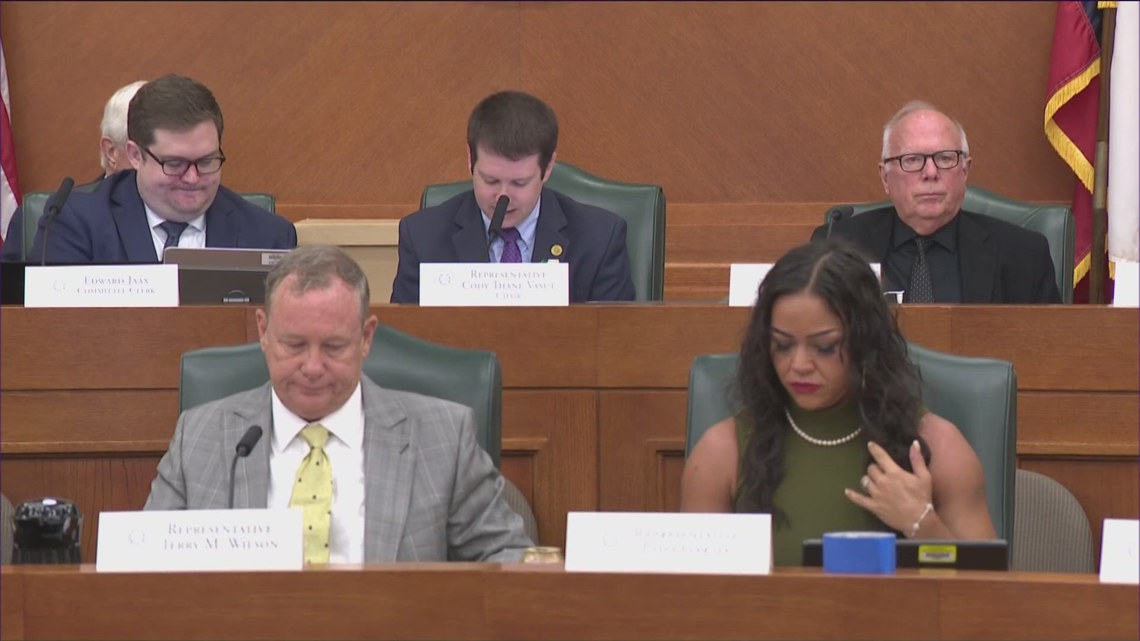
The new district lines could be considered by the entire state House as soon as Tuesday.
(The Texas Tribune) A Texas House panel on Saturday advanced a draft congressional map aimed at adding five new Republican districts next year over protests from Democrats that the proposal would suppress the votes of people of color.
The chamber’s redistricting committee approved the map on party lines, 12 to 6, after spending much of Friday hearing testimony from U.S. House Democrats from Texas and members of the public largely opposed to the plan. The map could be considered by the entire state House as soon as Tuesday.
Earlier in the hearing, GOP lawmakers said that they are redrawing the state’s congressional map to advantage Republican candidates, setting aside a legal justification offered by the U.S. Department of Justice and making their political motivations explicit for the first time.
“Different from everyone else, I’m telling you, I’m not beating around the bush,” Rep. Todd Hunter, the Corpus Christi Republican carrying the bill, said about the goal of the map. “We have five new districts, and these five new districts are based on political performance.”
Texas Republicans launched the redistricting effort after pressure from President Donald Trump’s political operatives, who demanded state leaders redraw the map to help Republicans maintain their slim House majority ahead of a potentially difficult midterm election.
The House redistricting committee released its proposed redo of the map Wednesday. It slices up districts in the Houston, Austin and the Dallas areas, yielding five additional districts that would have voted for Trump by at least 10 percentage points in 2024. In 2024, Trump won 56.2% of votes in Texas. Under the current lines, Republicans hold 66% of Texas’ 38 House seats. The new map aims to push that share to 79%.
“Political performance does not guarantee electoral success — that’s up to the candidates,” Hunter said. “But it does allow Republican candidates the opportunity to compete in these districts.”
Gov. Greg Abbott, in adding redistricting to the special session agenda, cited a letter from the Justice Department claiming that four Texas districts were unconstitutionally racially gerrymandered.
But on Friday, state Republicans were unequivocal that their goal was not to fix racial gerrymandering — which several have testified under oath does not exist in the current map — but to give the GOP the greatest chance of controlling as many as 30 congressional districts.
“These districts were drawn primarily using political performance,” Hunter said, citing Republican gains made across the state since the Legislature last redistricted in 2021, especially among Latino voters.
The U.S. Supreme Court ruled in 2019 that states can draw electoral maps on partisan grounds.
But under Section 2 of the Voting Rights Act, the map cannot diminish the voting power of people of color. At Friday’s hearing, Democrats argued that the proposed map unconstitutionally packed voters of color into some districts while spreading them throughout others to reduce their ability to elect their preferred candidates.
“Every citizen should have equal access to choose their representation, instead of crowding Black people to the point that all the Black people in the state only have two representatives, and all the Latinos in the state are crowded up to the extent that their voting power is diminished,” U.S. Rep. Jasmine Crockett of Dallas told state lawmakers during the hearing.
Though people of color make up most of Texas and have driven almost all of the state’s population growth in recent years, the new map creates 24 districts that are majority-white — two more than the current map, which is under trial for possibly violating the Voting Rights Act.
Republicans rejected the idea that the proposed map would suppress voters of color, noting that it would create one new majority Hispanic district and two new majority Black districts. But all three are almost precisely 50% Black or Hispanic, which Democratic lawmakers said at the hearing is not enough to ensure they’re able to elect their candidates of choice.
U.S. Rep. Marc Veasey of Fort Worth, whose seat would be partially dismantled under the new lines, noted that his district was drawn by a federal court “to ensure that communities of color, Black and brown Texans, could finally have a voice in Congress.”
“Now, that voice is again under threat,” he said. “This is a map that was drawn behind closed doors — as we’ve heard here today — to dismantle representation and weaken our power in turn.”
It could take months, if not years, to resolve any legal challenge against the proposed map. A lawsuit against Texas’ current maps, passed in 2021, finally went to trial last month, almost four years and several election cycles after they went into effect.
In the meantime, Republicans in the Legislature have the votes to pass the map as it’s drafted.
Democrats, locked out of power in the statehouse, have few tools at their disposal to fight the map’s passage. The nuclear option is to flee the state and deny Republicans a quorum to pass any legislation — an expensive and politically tenuous move that state House Democrats were still considering ahead of the full chamber vote.
At Friday’s hearing, the only time the public would have to comment on the House’s proposed map, Democrats begged Republicans to slow or stop redistricting entirely.
“This is not a Texas map. It is a Trump map,” said U.S. Rep. Lloyd Doggett, an Austin Democrat. “It was imposed by President Trump, who has a stranglehold on Congress, and the only question here is whether he also has a stranglehold on this Texas Legislature.”
This article originally appeared in The Texas Tribune. The Texas Tribune is a member-supported, nonpartisan newsroom informing and engaging Texans on state politics and policy.
